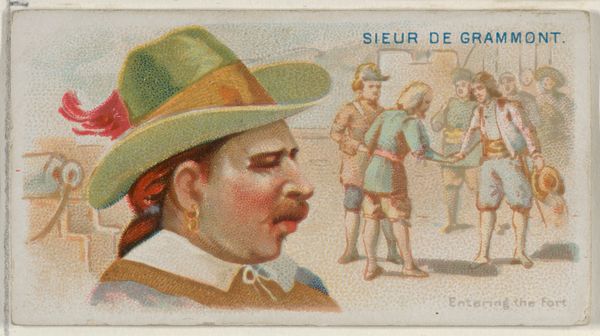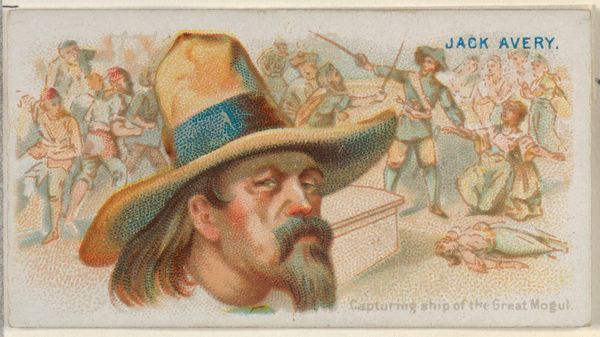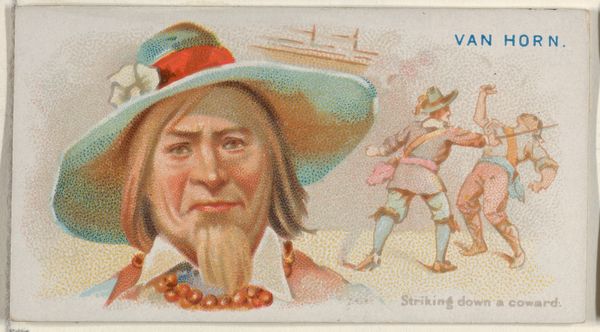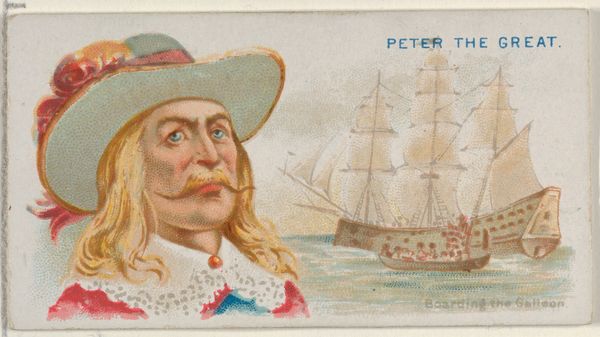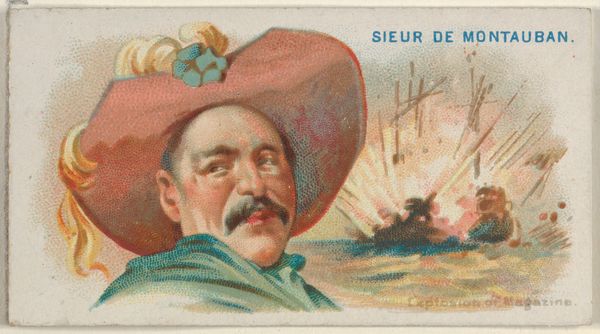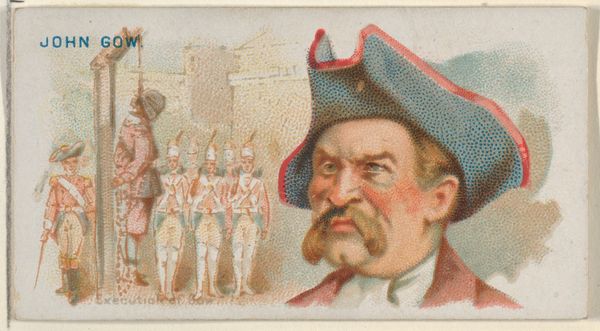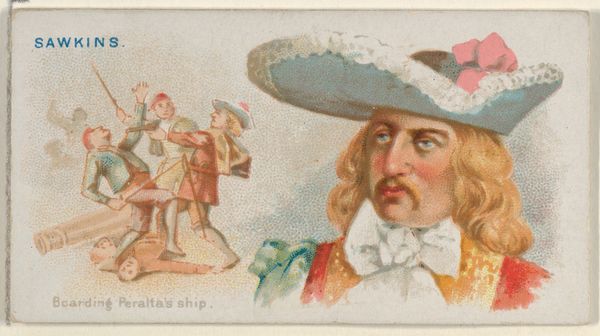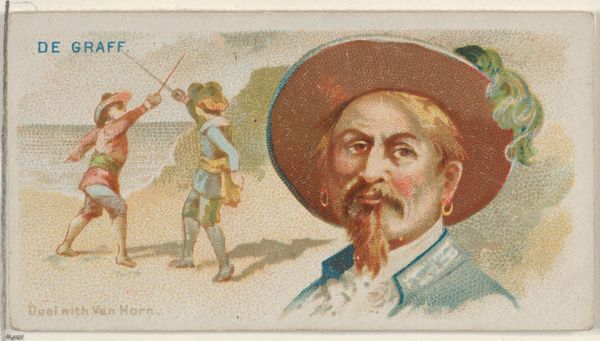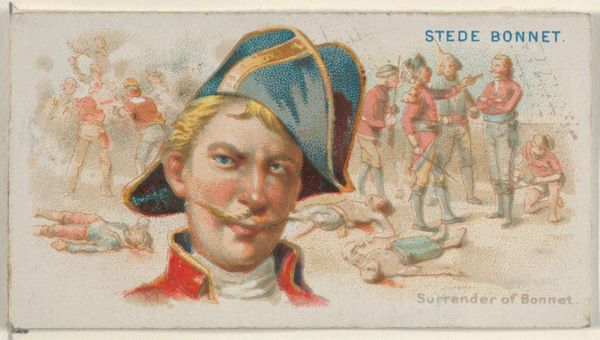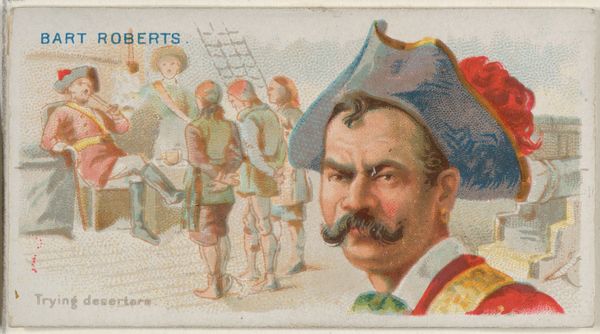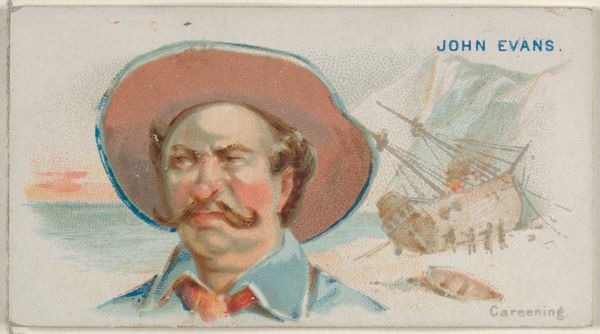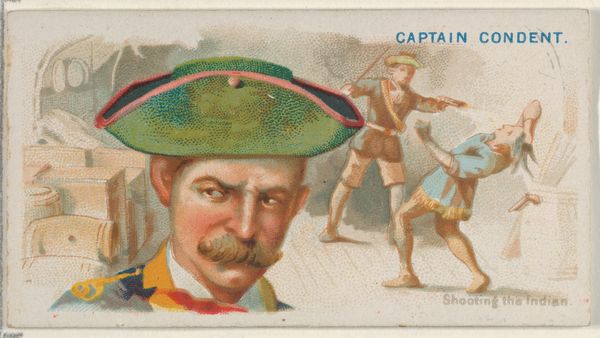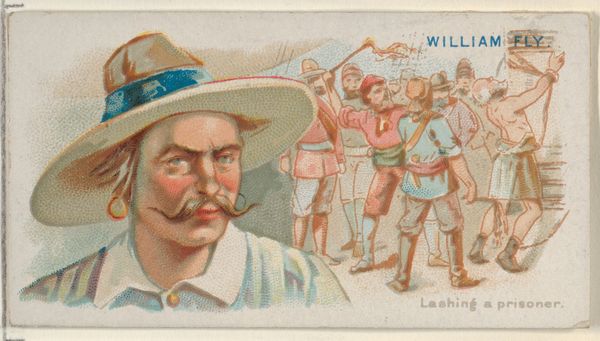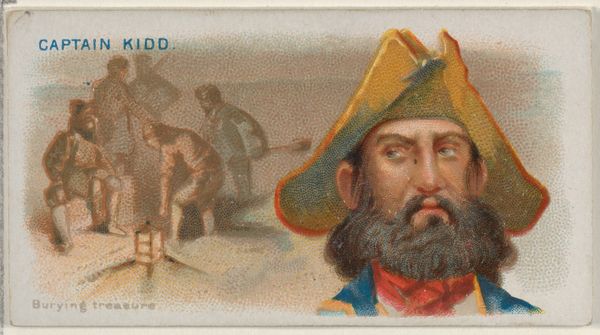
Pierre François, Capture of the Vice-Admiral, from the Pirates of the Spanish Main series (N19) for Allen & Ginter Cigarettes 1886 - 1891
0:00
0:00
drawing, print, watercolor
#
drawing
#
water colours
# print
#
caricature
#
watercolor
#
coloured pencil
#
men
#
history-painting
#
watercolor
Dimensions: Sheet: 1 1/2 x 2 3/4 in. (3.8 x 7 cm)
Copyright: Public Domain
Curator: This chromolithograph, “Capture of the Vice-Admiral” by Allen & Ginter, dating from 1886 to 1891, offers a snapshot into the romanticized vision of piracy during that era. It's part of a series produced for cigarette cards. Editor: It's intriguing, with that stern-faced man dominating the frame. Almost cartoonish. The whole thing feels both theatrical and unsettlingly detached from the violence it depicts. Curator: Precisely. Notice how Pierre François is portrayed; he’s almost like a mascot. His severe expression is at odds with the chaos behind him, yet his direct gaze captivates. These cards tapped into an era fascinated by adventure. Editor: Absolutely, and that portrayal masks a lot. By packaging these idealized, sanitized battles with a product like cigarettes, it normalizes imperialist power structures, whitewashing the real brutality inflicted during colonial expansion and the slave trade. It’s a form of propaganda, really. Curator: I see your point, definitely. I was also drawn to the symbols they selected: the turquoise hat decorated in gold ornamentation, his piercing blue eyes, a suggestion of regality—but they are deployed here for commercial purposes and linked inextricably with colonial ambition. Editor: Right! That flamboyant hat screams status and wealth obtained, presumably, through violence. This card is tiny, but within that space, there’s a confluence of art, marketing, and deeply problematic ideology. Curator: Looking closer, the choice of medium-- watercolor and colored pencil gives an air of fantasy which distracts from the political underpinnings you highlighted, I find this is what allows the picture to perpetuate specific cultural associations, but it also erases more complex interpretations. Editor: I agree. The aesthetics romanticize a deeply unethical history. Remembering this contextual complexity when looking at artworks such as this enriches our interpretation by revealing hidden intentions and overlooked injustices. Curator: These works often tell stories on two different levels: what we literally see, and what cultural and historical legacies it represents. Recognizing both can reshape the conversation. Editor: Precisely, art serves as both a mirror reflecting societal ideals, and a tool that has and can create lasting social transformation.
Comments
No comments
Be the first to comment and join the conversation on the ultimate creative platform.
